For those of you who are new(er) to my writings, around eight years ago I started a series of reviews of Asian restaurants of various cuisines. Sometimes I drill down more specifically and do a post like my recent Korean fried chicken one, or sushi, but these were more catch-all posts. I began the series with this little definitory gem:
Chop Suey: Americanization of zá sui, literally, “assorted pieces”, and anecdotally, deriving from a Taiwanese tradition, tsap seui, “miscellaneous leftovers”.
More or less fits the idea, no?
Let us begin at Dukkeobisigdang, or, in English, Toad Restaurant, at Saraza 2054 in Flores. Now, from a western perspective… “Toad”?! But, in Korean culture, as I understand it, the toad is the God of the Moon, and is a symbol of abundance and foresight, which seems like a decent reason to name a restaurant for one. The sign for the restaurant is the vertical one, and you enter through that doorway, down a long hallway, and into a fairly large two dining room restaurant with the kitchen between them. Service is a bit slow, as they seem to only have two waiters, only one of whom seemed interested in doing his job. Fair warning, cash only – figure on anywhere between 10-20,000 pesos per person, though that can vary depending on what you order from the menu as well as choice of beverages, of course.
The menu is only in Korean and has no prices.
Google Translate (or another app) comes in handy here, as long as you’re relatively familiar with Korean dishes. Some of it will translate to something that tells you what the dish is, some of it will only transliterate to the way to say the name of the dish.
A quite decent array of banchan. Not overly spicy, which was a little surprising given that the clientele, other than ourselves, was entirely Korean.
My Sunday lunch companion went with one of his favorites, dolsot bibimbap, the hot stone bowl presentation of rice, veggies, and meat.
He mixed it up and added a fair amount of gochujang, Korean chili paste, which we asked for.
My dish came spicy, the stir-fry of calamari. It also had a touch of sweetness, almost like the sauce used in making Korean fried chicken.
Overall it was good. Not wow, but good. And it’s cheap. These two dishes with their accompanying banchan, plus a large bottle of water, and tip, and we spent a whole 24,000 pesos, or $18. There are other places in the neighborhood that are better and others that are worse. I’d kind of like prices on the menu. We were a little concerned that basically, they just make prices up when they look at you and decide how much they’re going to charge you. And, maybe they do, but it was still very reasonable.
I’d go back to try more, though I do wish they accepted either debit cards or MercadoPago, (the former actually being a legal requirement to operate, but still ignored by a fair number of restaurants out there).
Back during those halcyon days of the pandemic, where we were all cozy in our homes and cooking up great meals and ordering in, all without having to actually interact with restaurants, Hanok opened up (and then fairly swiftly closed, due to said pandemic), along 25 de Mayo in Microcentro. We ordered from them once, and had mixed thoughts about it, but overall, decent Korean food. It happened that as I followed their Instagram account at the time, which went inactive for the last several years, that I spotted when it went active again, and announced the opening of a new space at Parana 610, in San Nicolás, right near to the Tribunales (the various state and federal court buildings).
I apparently wasn’t the only one, as, having only been open since this past Monday, they quickly filled up at lunchtime, plus there was a constant stream of people coming in for take-out orders. The menu is similar to their old one, but not the same.
I hadn’t looked back at my original review. But looking back now, I would have been as surprised then as I was this time on ordering mandu, Korean dumplings, to get these dry, baked versions, versus the steamed, more potsticker style that they used to serve. I’m not sure I’ve ever had mandú made this way – usually either steamed or fried. These were the kimchi dumplings and kind of bland for that, filled mostly with tofu and just a bit of kimchi for spice.
More successful, the jaeyuk, a moderately spicy stir-fry of pork and onions, served up with rice, an okay broth, and trio of banchan that included more not particularly spicy kimchi, some triangles of a dry, fried pancake, and a couple of pieces of tofu with a little sauce on it, more reminiscent of local salsa criolla than something Korean. I also ordered a classic kimbap to go, but forgot to take a picture of it – it was both forgettable, and, not remotely as good as the one I had from their earlier place.
The feel of the place is a bit cafeteria-ish, enforced by food being brought to the tables on plastic school cafeteria trays (I took all the stuff off the tray and put it on the table for the photo). Service is a little scattered, but friendly and reasonably efficient – much of that can probably be chalked up to being their third day open. I wouldn’t call it pricey, but certainly pricier than most places out in either of our Koreatowns. On the other hand, the same would likely be true of any other category of restaurant, just because of neighborhood differences. And, this place is in easy walking distance of home – about 15-20 minutes. Both dishes above, plus the to-go one (which was my later dinner), a bottle of water, and tip, 31,000, or $23. I may go back and try more, but gut impression is that I’d rather walk another 5-10 minutes in the direction of downtown and go to Mr. Ho, Fa Song Song, or Kimchi Garden.
Hong Kong Style used to be one of the only places in town that offered dim sum, albeit a very limited selection. I only ever went there for those offerings, so never tried their other food, a selection of mostly classic Hong Kong style cooking. The place closed up during the pandemic, and recently re-appeared a few blocks away at Montañeses 2574 in Belgrano, just outside of Chinatown, under the guidance of well-known local chef Walter Lui. I may be wrong about this, but I believe he’s the son of the folk who used to run the old place.
Henry and I headed there for this week’s date night, and it’s a comfortable, semi-loungy space, entered through an unmarked door (after first being challenged, speakeasy style, for reservation details). Service is friendly and efficient, if a bit garrulous – both waiters seemed to feel like they had to explain not just the concept of the restaurant, but the concept behind each of numerous dishes on the menu, and even a bit of the concept of simply eating in a restaurant, as if none of the customers had ever done such a thing. They need to dial it down a bit and cut the 3-4 minute monologue back to about 1 minute unless asked for more.
Once food was ordered we received a small pickled vegetable salad and some activated charcoal bao. The latter seem a nod to “we’re doing something different here”, but since none of the rest of the food reflects that more modernist approach, it didn’t really fit. Just make some good little Chinese buns to serve and leave the colorant aside.
We split an order of quite delicious pork and ginger dumplings in a peanut sauce. Quite a happy-making start.
Henry went with his favorite, kung pao, here made with pork (and he always has them leave the peanuts off – he doesn’t like the crunch). Moderately spicy, and kicked up to more our style with a dish of quite fiery hot sauce brought on request. The sauce was quite different from any kung pao I’ve ever had, but really quite good. Then again, I guess this is a Hong Kong reinterpretation of a Sichuan dish?
I got what was touted as the house’s signature dish, the Taiwanese drunken chicken. Again, really good, with a lot of garlic and basil, and a wine-based braising liquid. I too, tend to like a bit more spice and added some hot sauce to it.
Walter came out to chat with us briefly, and offered us a couple of desserts on the house. The first, a chocolate marquise. Obviously not very Chinese, though given the European influence in Hong Kong, perhaps something common, I don’t know. I’m not a huge fan of marquises, which to me are basically just dense flourless brownies. But Henry liked it.
On the other hand, we both loved the coconut cream with tapioca pearls, orange syrup, orange segments, and a sesame tuile, and we fought over spoonfuls of it.
Love the space. I already noted my thoughts on the service. The food is quite good, and beautifully presented. It’s also expensive. Even with the desserts being free, the three dishes we paid for, plus two waters, and a bottle of wine (almost a third of the bill, just to be fair), plus tip, ran to 117,000 pesos, or $87, and would have gone to around an even $100 if we’d paid for desserts. So, more of a splurge kind of place – but then, that’s what date night tends to be for us. I’d go back for a special evening, but probably not for just a regular night out.
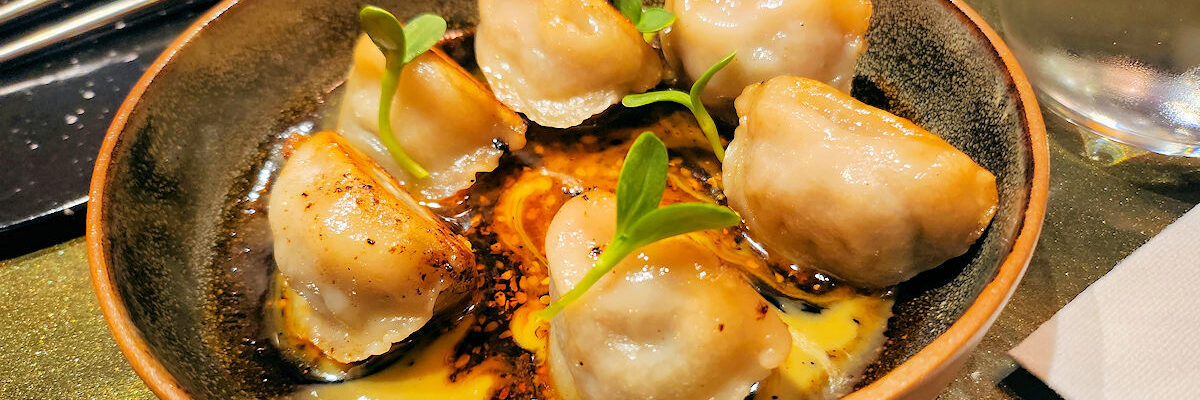
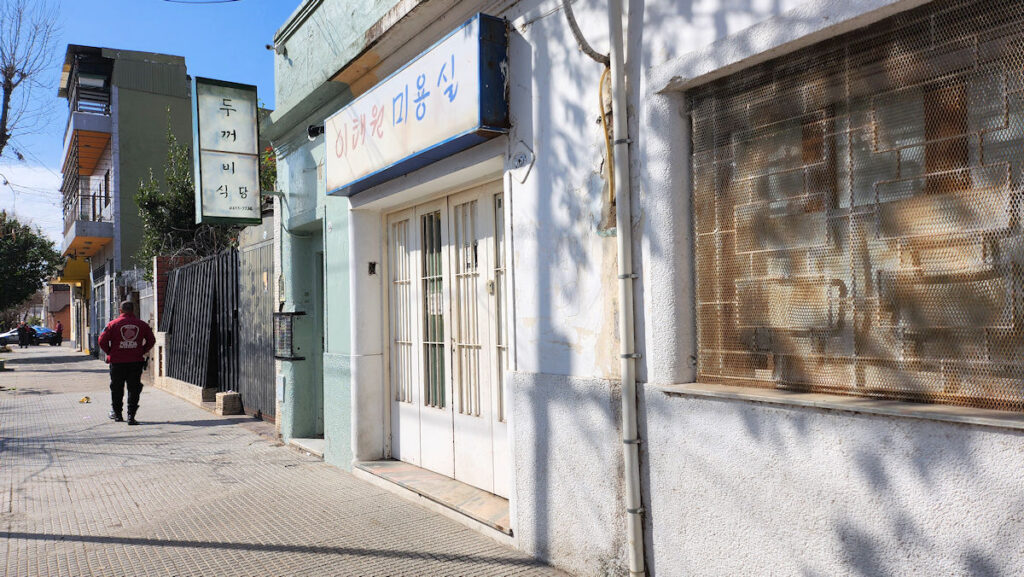

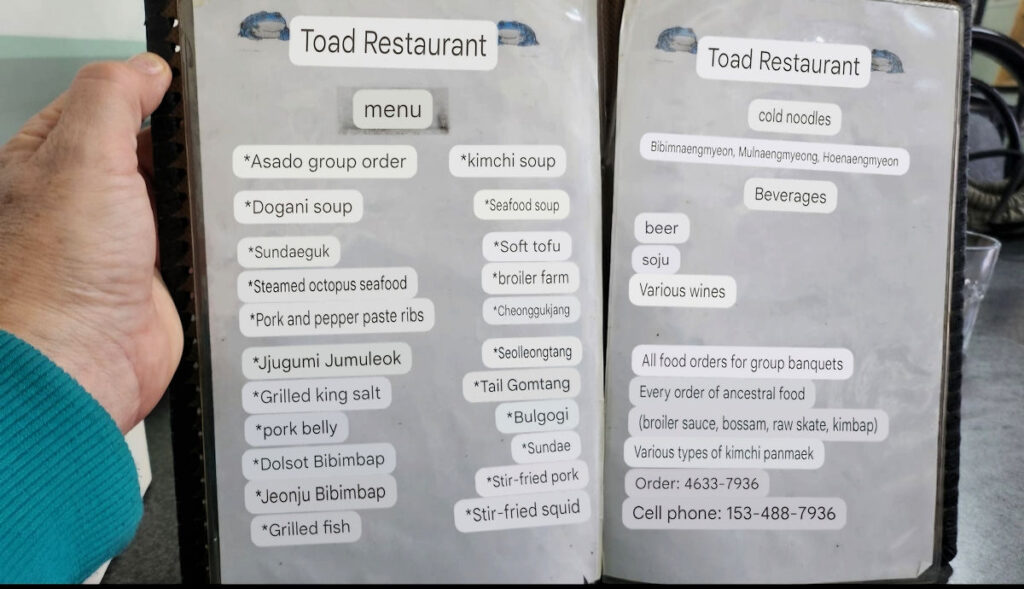
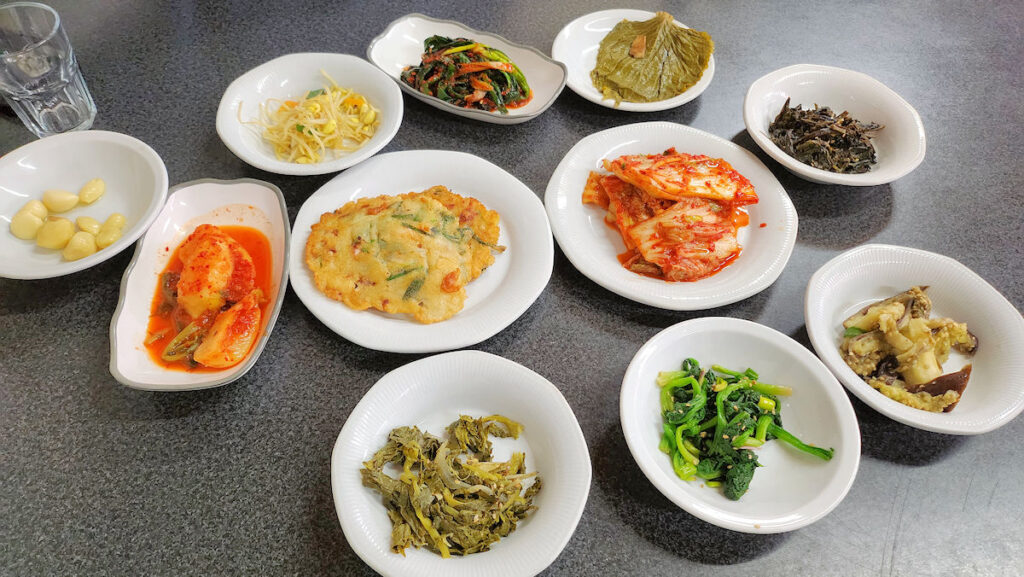
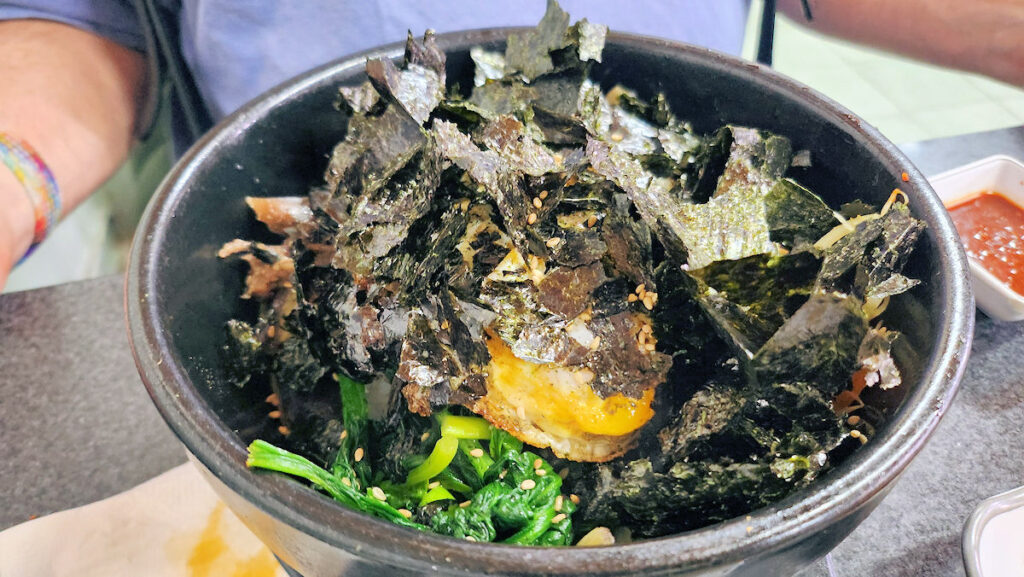
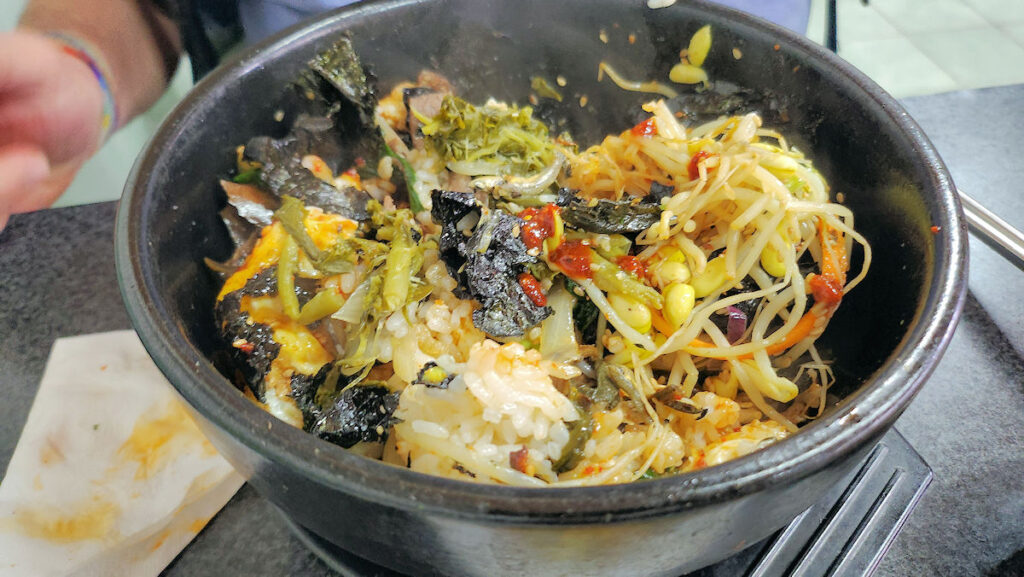
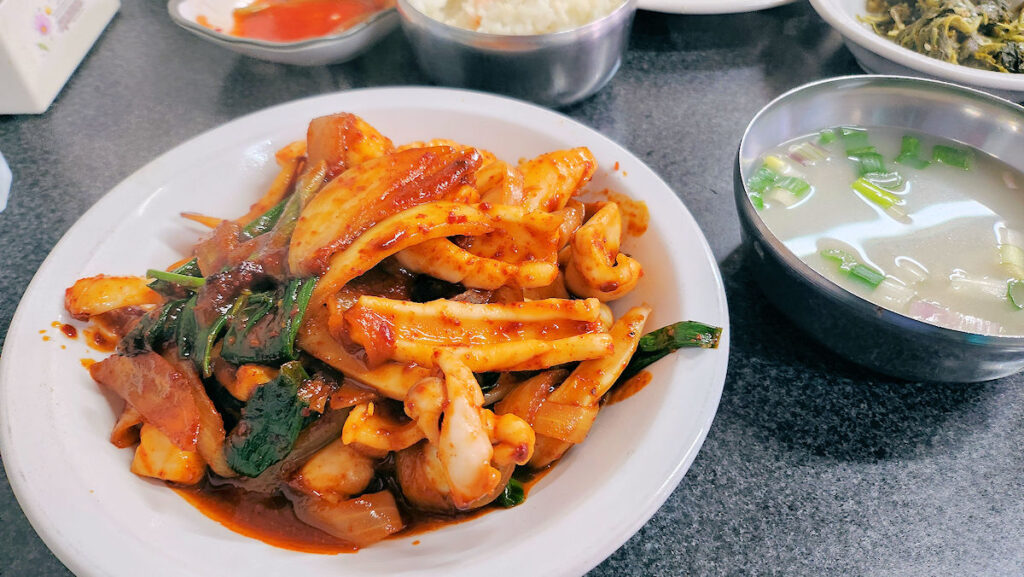
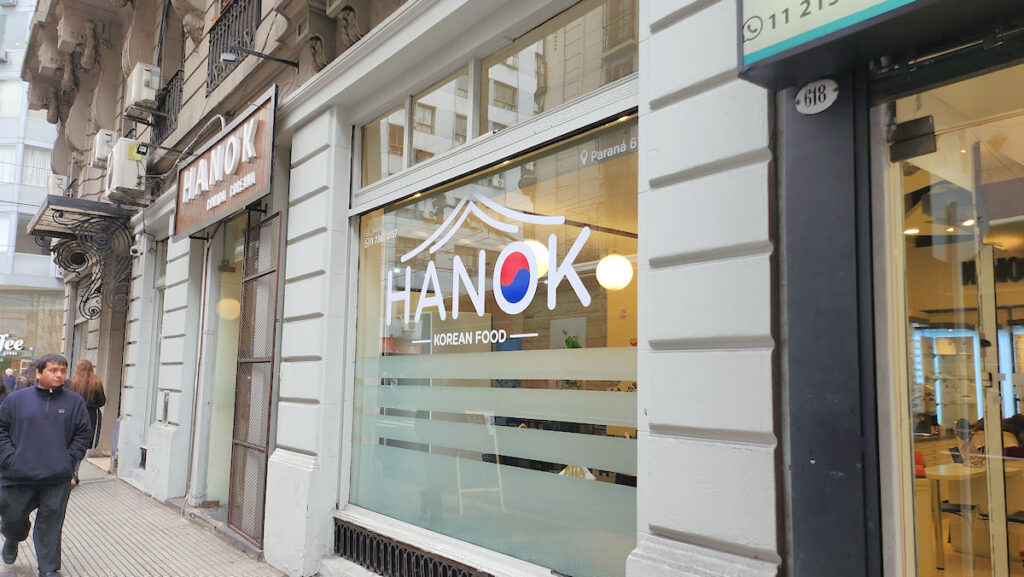
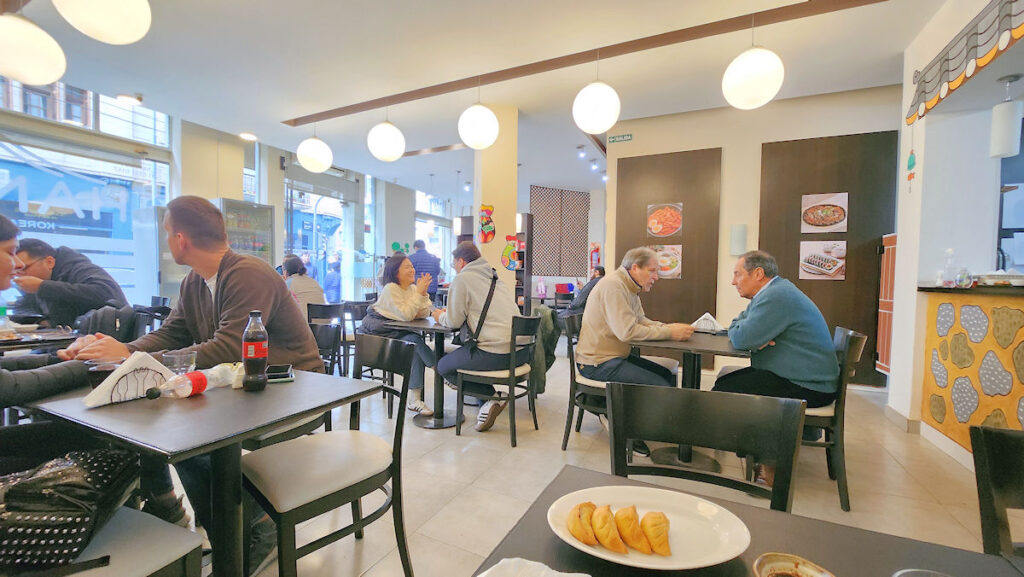
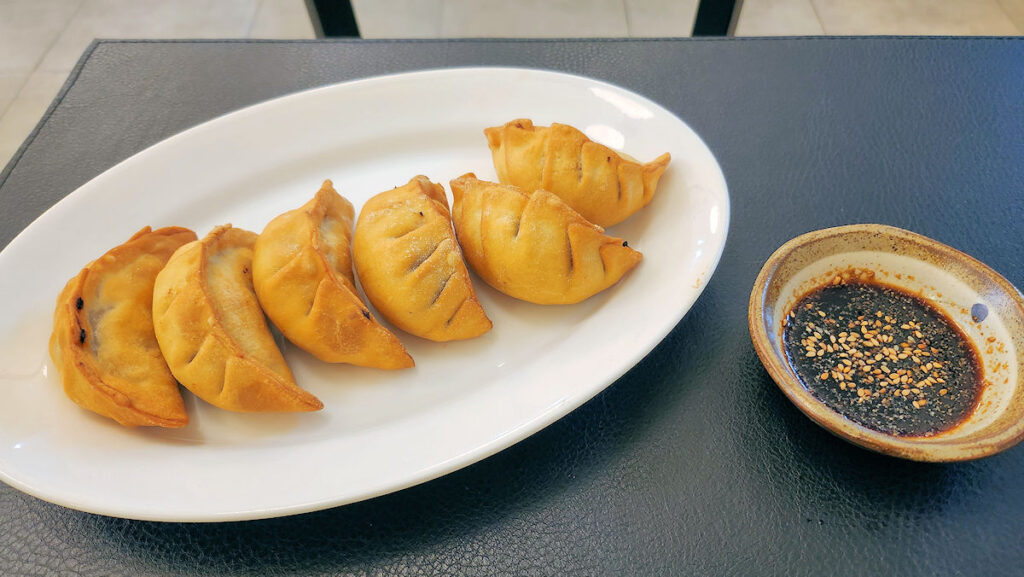
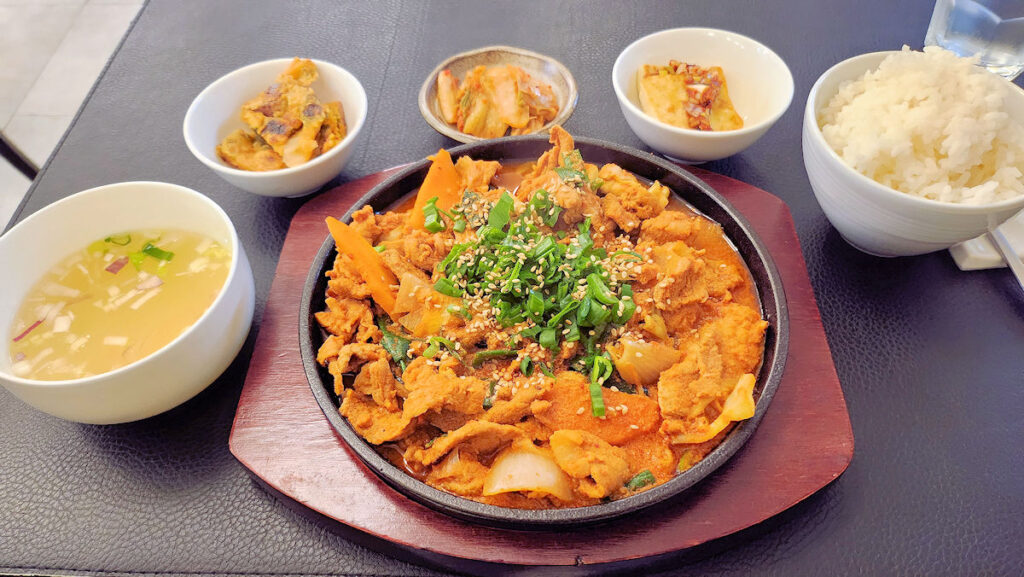
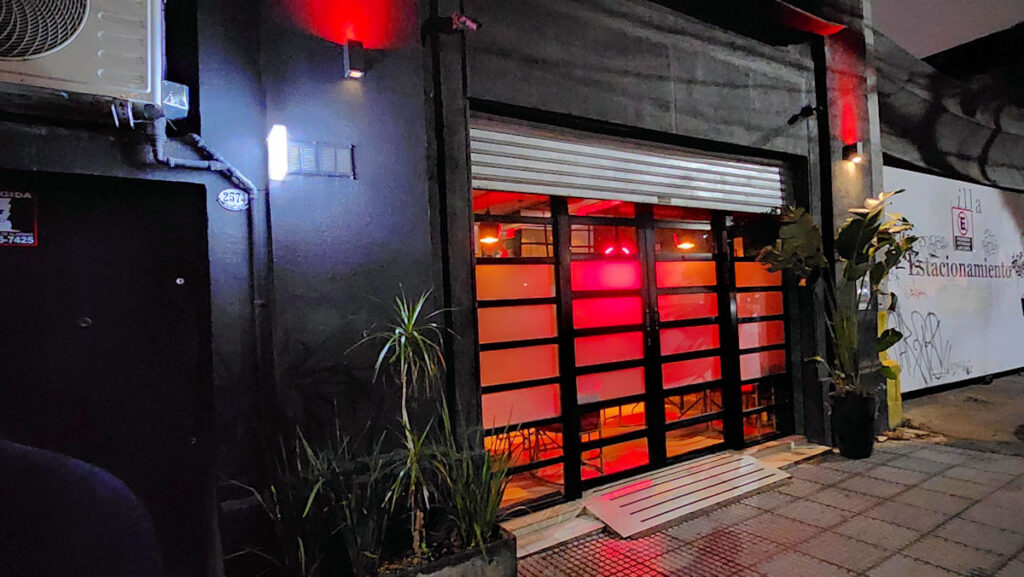
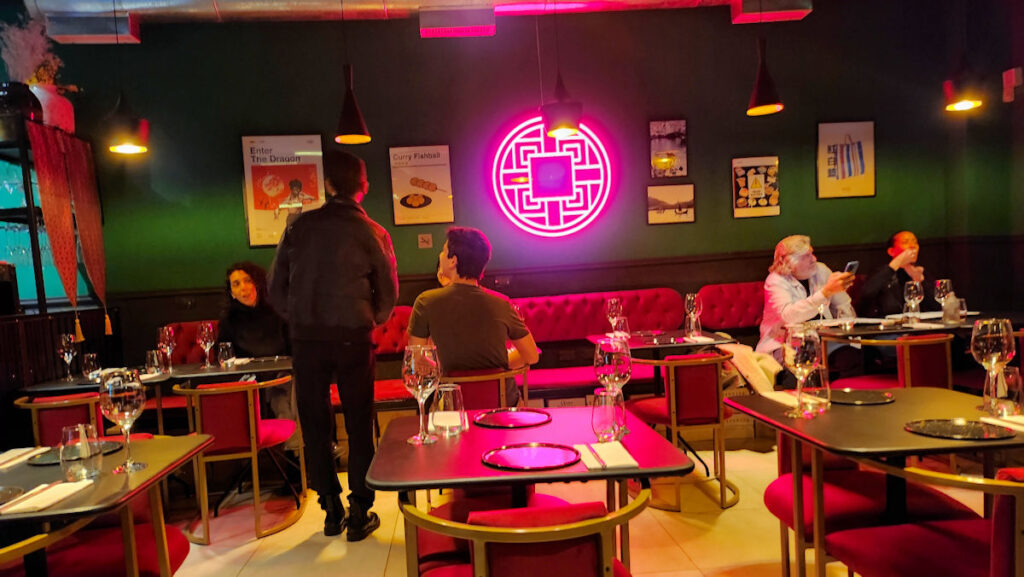
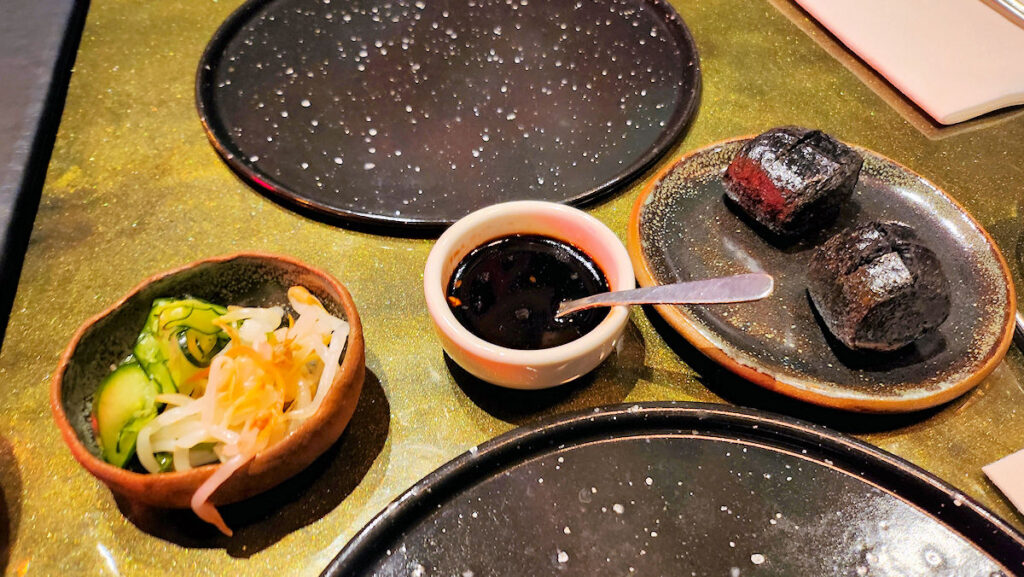
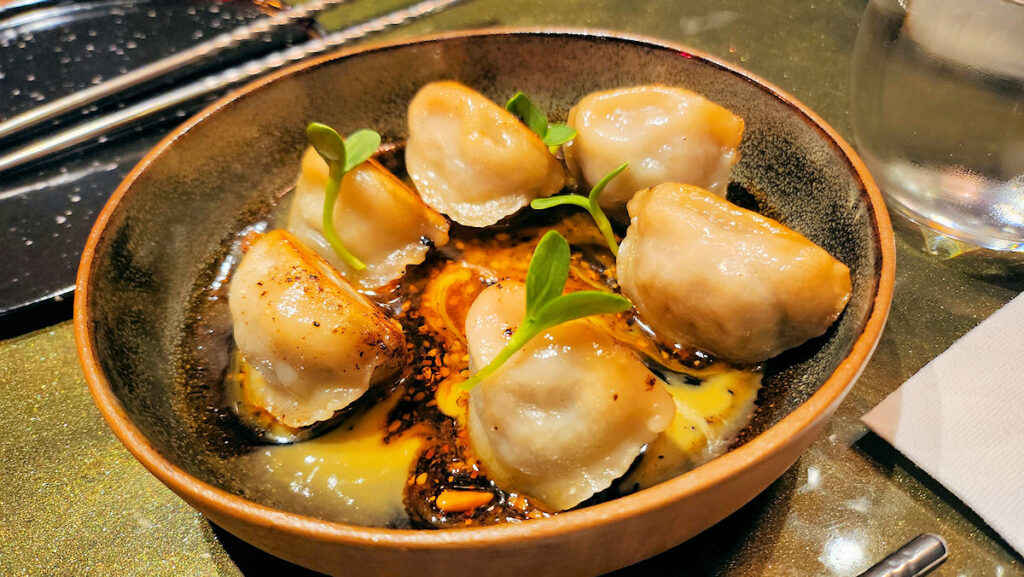
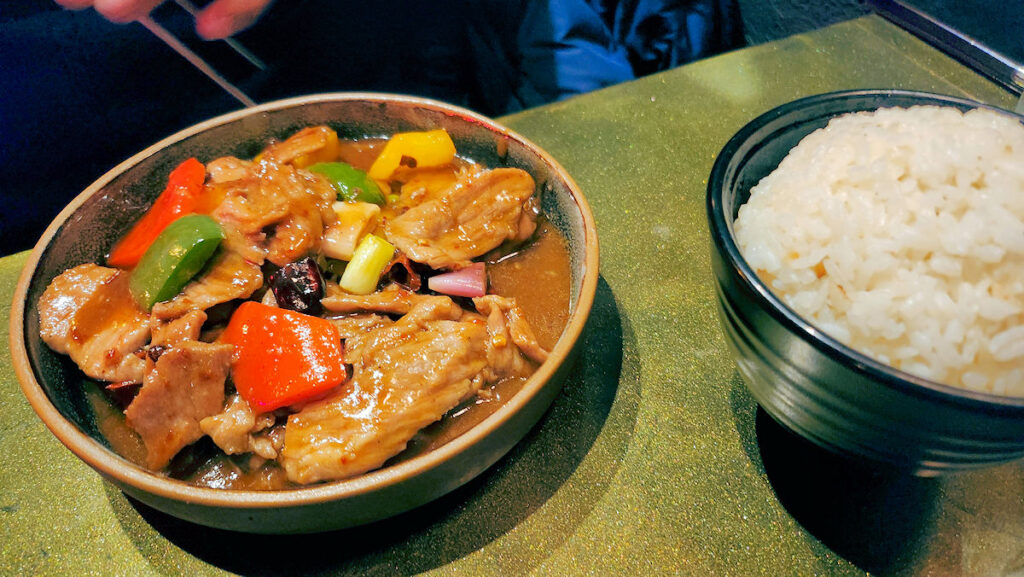
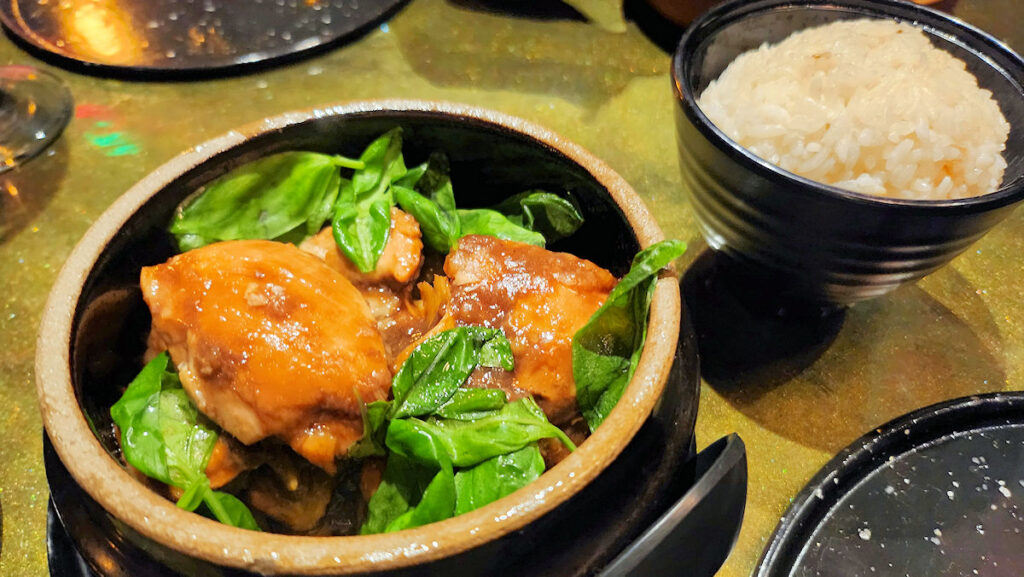

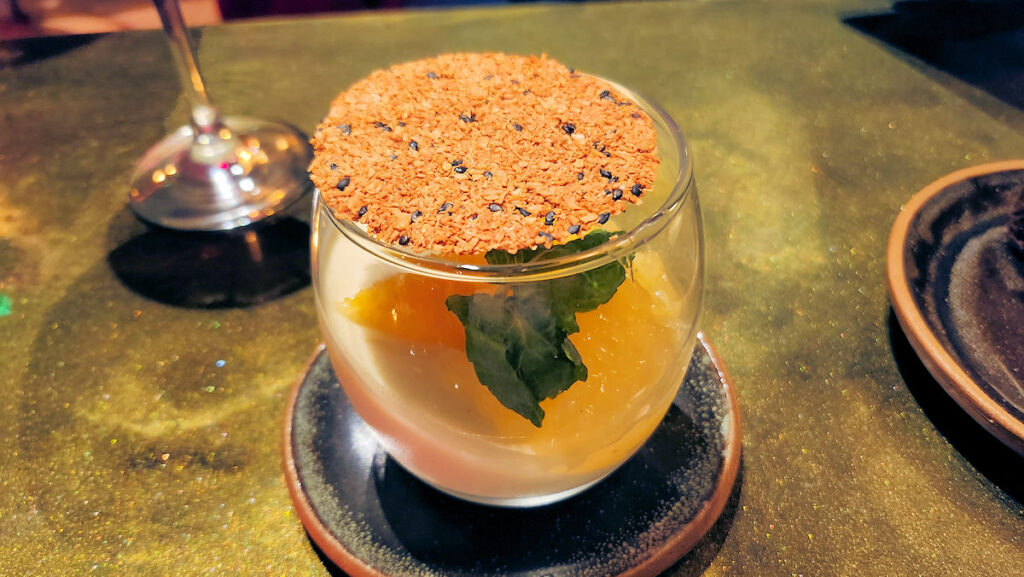
[…] You would think, given how much I like dim sum, that I’d have made the effort some time during the last eleven years to go to the one place in town that actually serves it, Hong Kong Style, Montañeses 2149 in Barrio Chino. (There was another restaurant that offered quite a few dim sum dishes on their menu, Cinco Corderos, but it closed awhile back. Edit: And then re-appeared in a far-flung barrio!) Somehow, though, I just never made it – the place always seemed to be closed – turns out they only open for lunch on Friday, Saturday, and Sunday, and we rarely go to Chinatown at night. But I’ve heard good things about the place over the years, though been told it’s a bit on the pricey side. [Closed in May 2020 due to Covid-19 shutdown, reopened in a new location in early 2024] […]